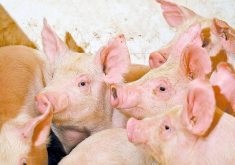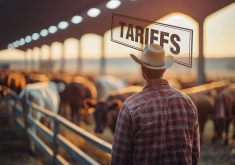The Feeder Associations of Alberta (FAA) is changing with a changing Alberta cattle industry, says Reg Schmidt, director and interim general manager of the 56 local association members’ organization. Having served smaller livestock-feeding operations for over 70 years, member associations are now opening their doors to corporate farms and mid-size operators to allow them to rebuild memberships that have shrunk as small feedlot operators have retired or gone out of business during eight years of lean returns.
Schmidt said becoming accessible to new members and more responsive to members’ needs is part of the most comprehensive regulatory overhaul since 1983, said Schmidt.
Read Also

Horns aren’t unlocking anytime soon on livestock transport standards
Standards good enough meet the definition of “humane” animal transportation still vary widely between what what industry wants, what animal rights advocates want and, between the two, what federal regulators decide is good enough.
“New regulations are in the process of final drafting with legislative council. We anticipate some time this spring for their introduction and they will be in full force by September 2011.”
Besides adjusting for different kinds of producer business structures, other new regulations the FAA is planning include raising the loan ceiling to $500,000 from $300,000 and providing the opportunity to draw equity cash while growing cattle and to draw cash on a partial sale of cattle. There are also plans to smooth paper flow which will improve security for the FAA and take less of producers’ time.
At the FAA recent annual meeting in Red Deer, Deputy Agriculture Minister John Knapp said Alberta’s herd has dropped from 2.3 million cows to approximately 1.6 million cows in the past four years, and the numbers are expected to continue to decline. That reduction parallels a decline in all major beef-producing nations, said Brian Perillat, a senior analyst from Canfax. This suggests a positive market outlook because the demand for protein is growing while the beef supply is shrinking.
Adding to the brighter outlook is a new Agriculture Financial Services Corp. (AFSC) insurance program for cow-calf producers.
The FAA is also developing a financing model to address kinks in the supply chain. “Most supply chains have a difficult time growing without adequate financing,” Schmidt said. “We are excited about this project to provide a new option for differentiated beef production in Alberta. Long term, we can be much more competitive, thanks to the government guarantee that backstops our program and provides lenders with confidence to lend at below prime interest rates.”
———
“WeareexcitedaboutthisprojecttoprovideanewoptionfordifferentiatedbeefproductioninAlberta.”
REG SCHMIDT














